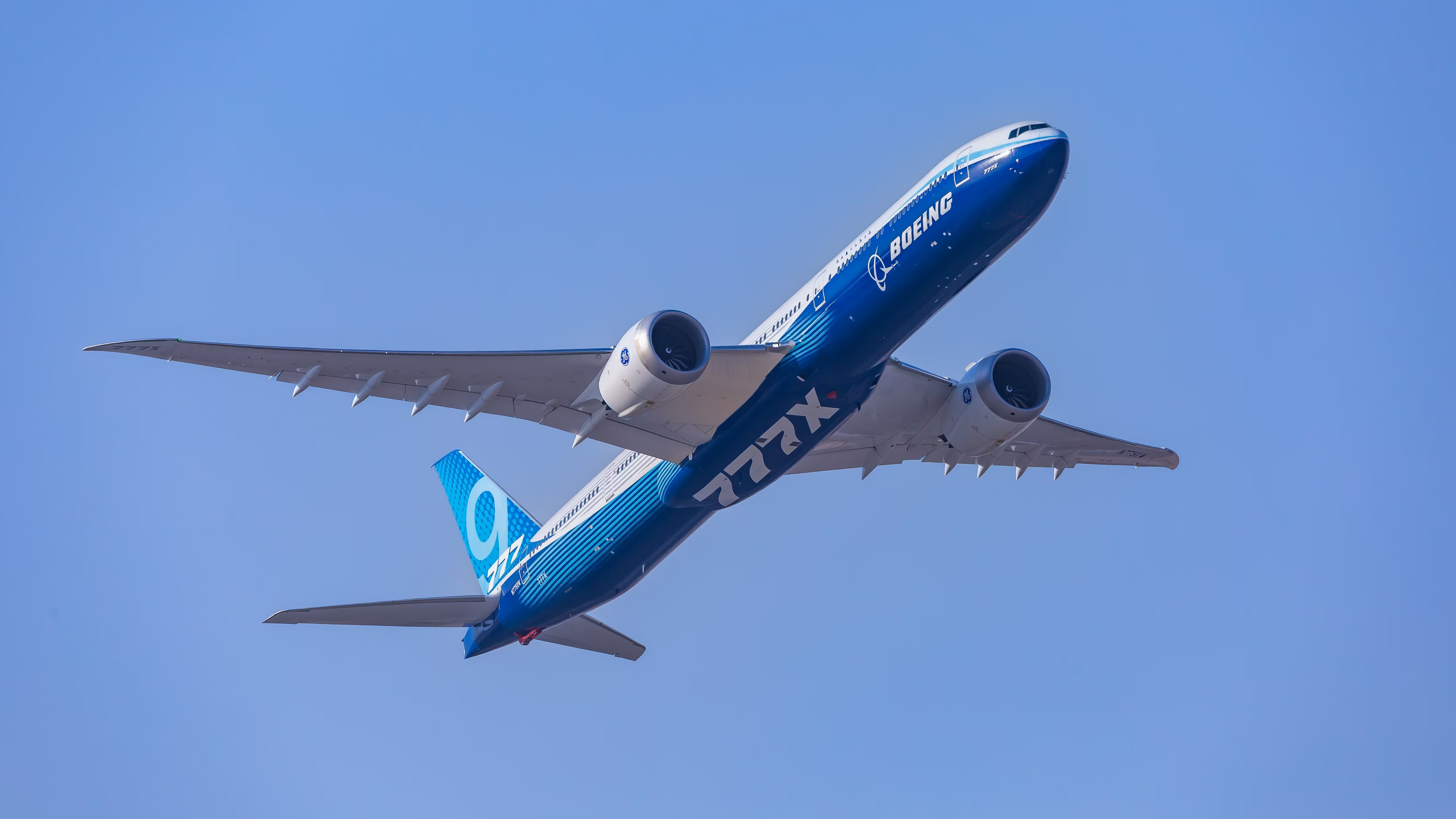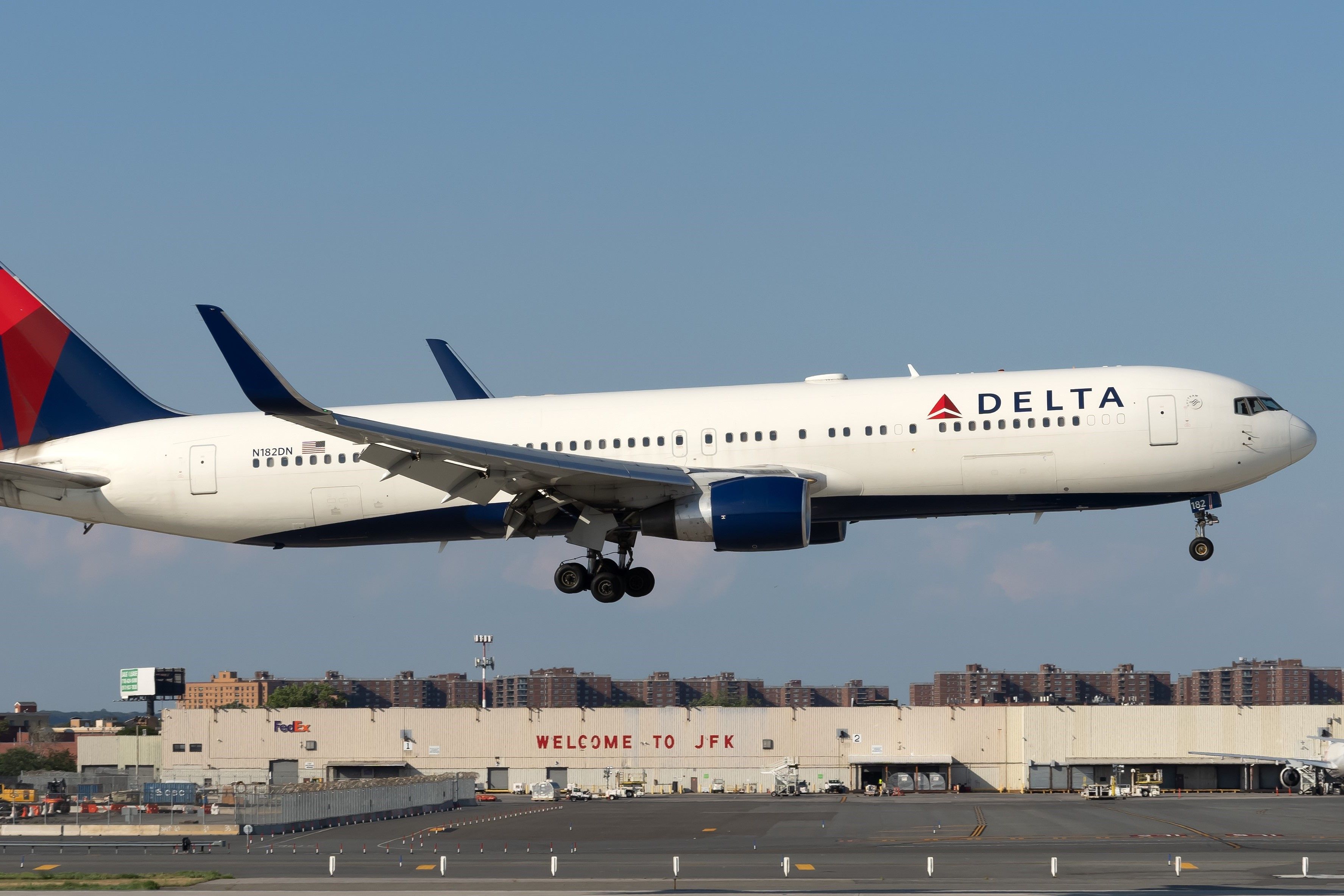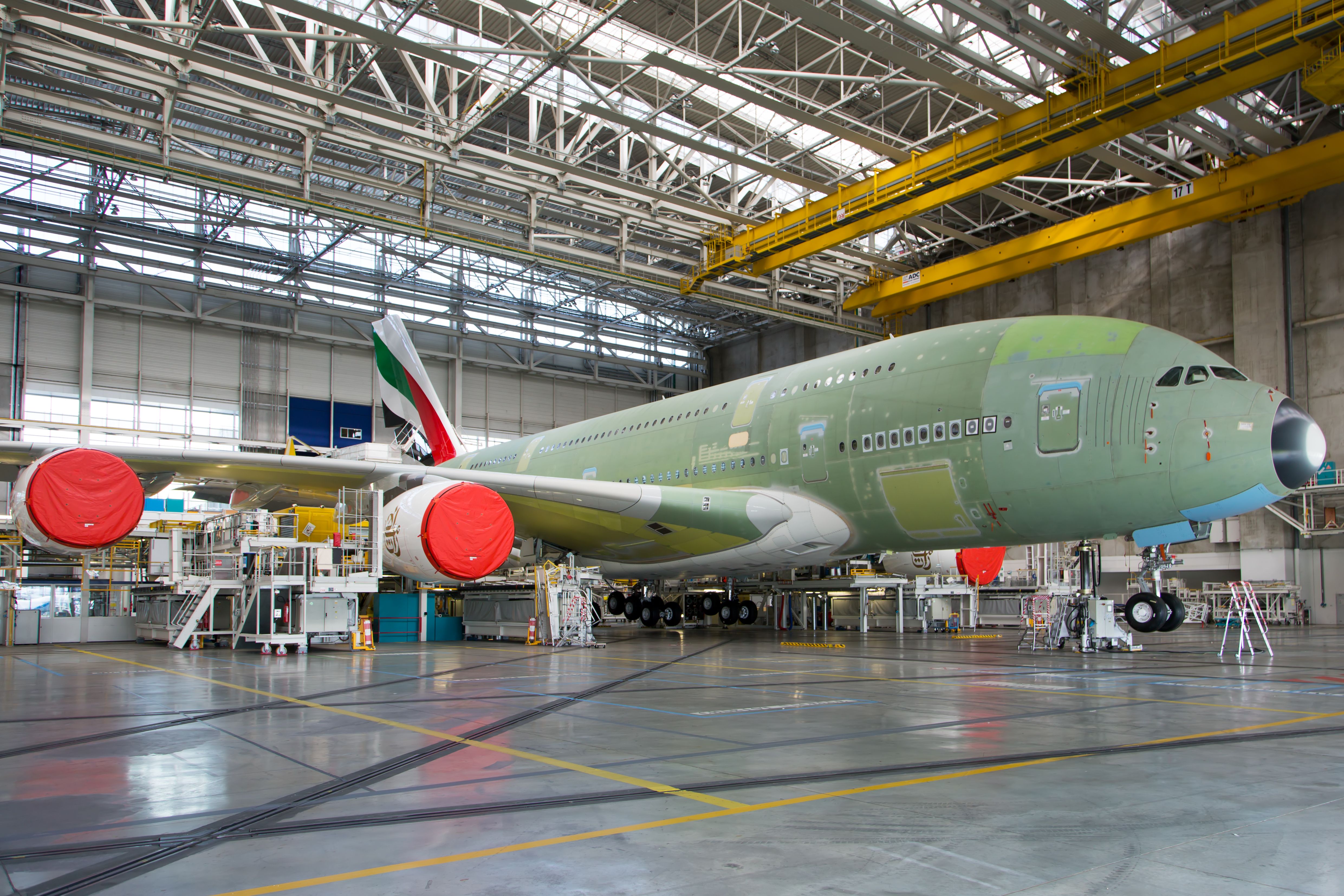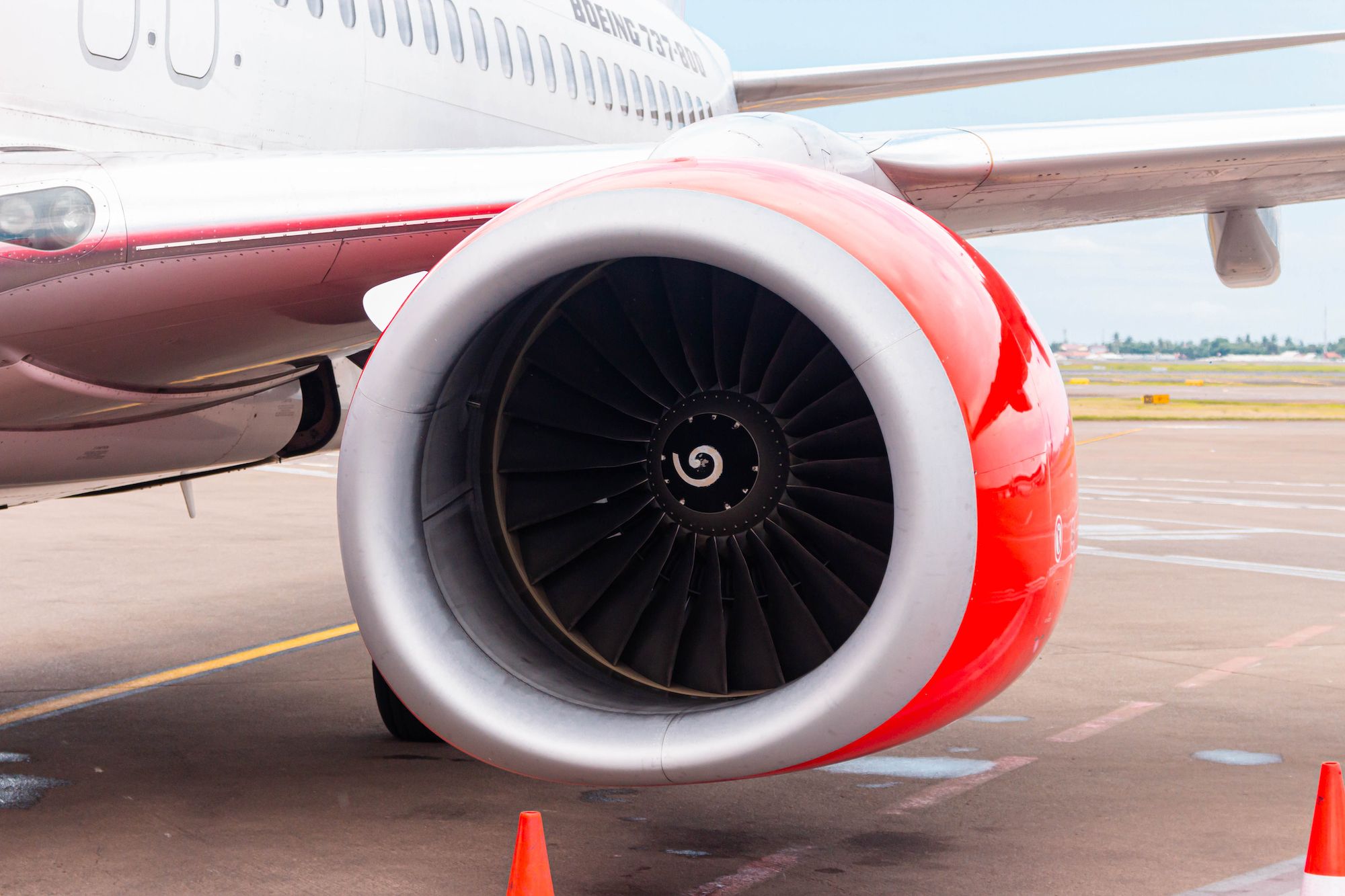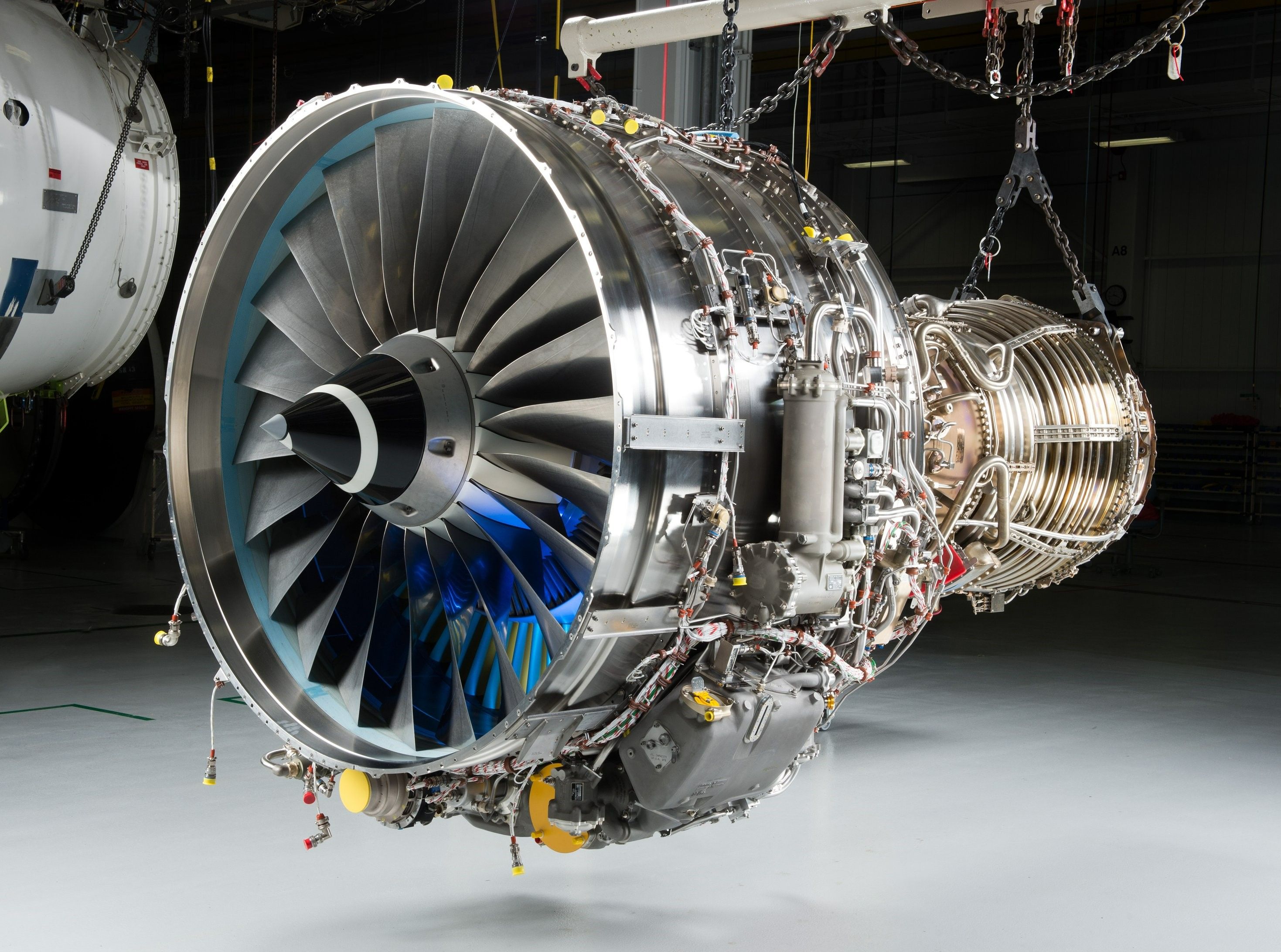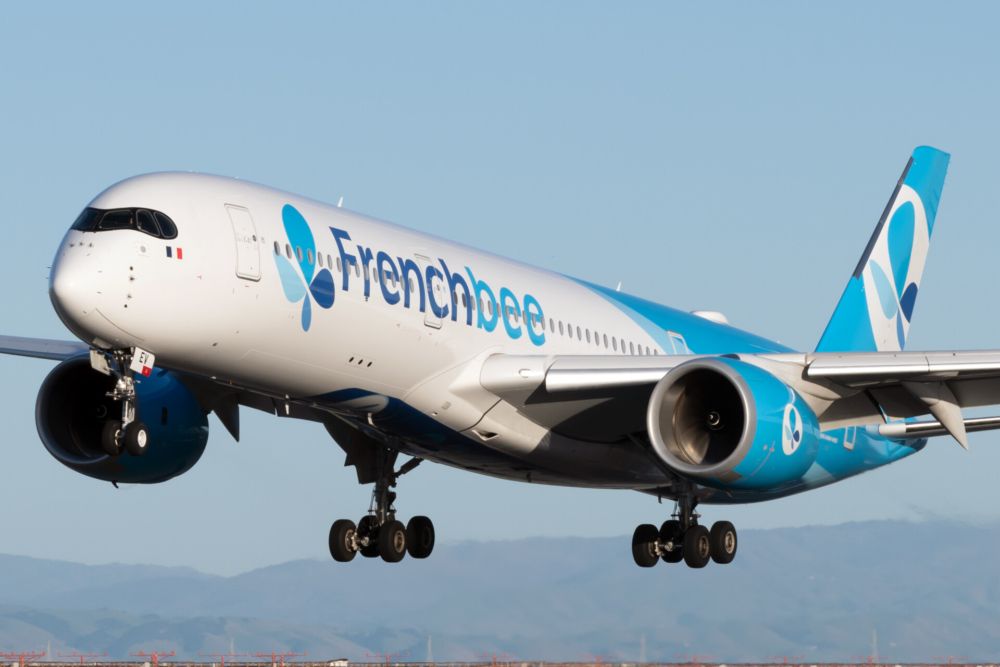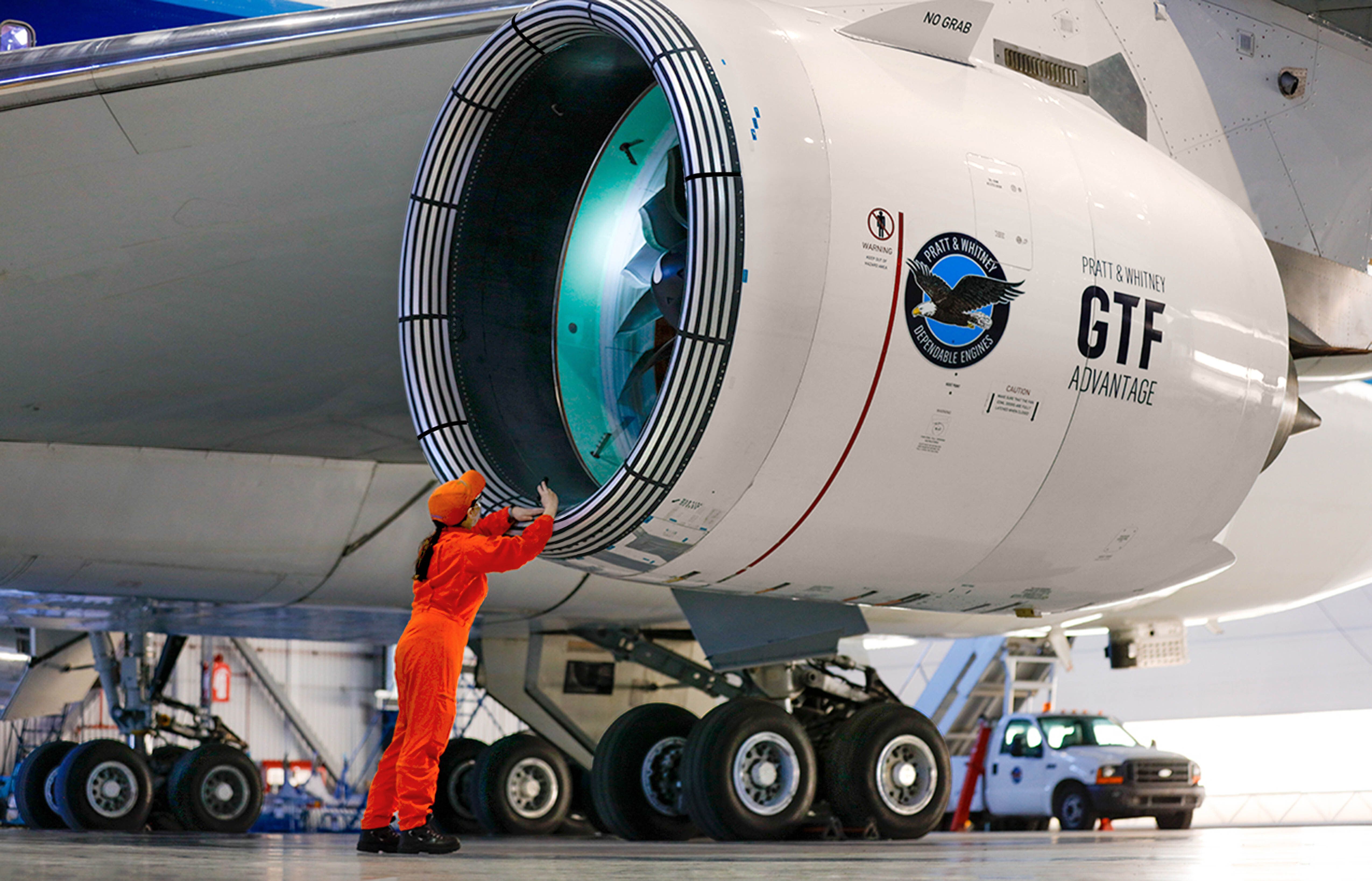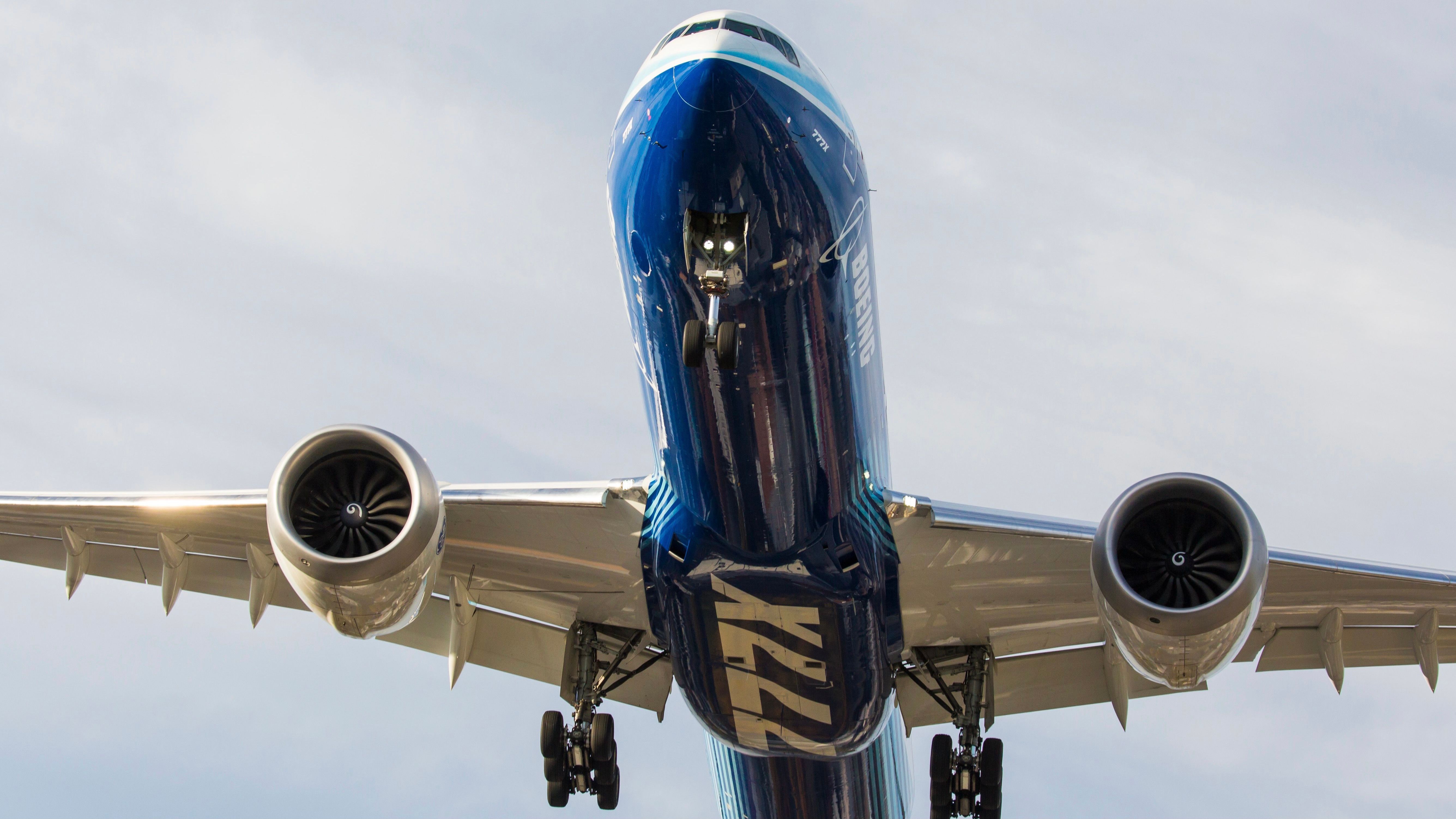Summary
- Jet engines are essential for aircraft, providing power, thrust, and determining efficiency.
- Within the aircraft engine industry, GE leads the market with a 55% share, followed by Pratt & Whitney at 26% and Rolls-Royce at 18%.
- Engine manufacturers face several challenges while striving to create more powerful and fuel-efficient products.
Jet engines are complex machines that are precisely engineered and tailored to the requirements of aircraft and their operators. While there are many makers of jet engines worldwide, some of the largest engine manufacturers are GE Aerospace (GE), Pratt & Whitney, and Rolls-Royce. These companies design and produce some of the most efficient commercial jet engines available.
While some engine models cater to various aircraft types of similar size and thrust classes, others may be specific to only one type of aircraft. For example, The GE CF6-80 engine is installed on Airbus A330, Boeing 767, and Boeing 747, among others.
On the other hand, the GE9X engine is solely applicable to the Boeing 777X aircraft (yet to enter service). Irrespective of the engine applications, both aircraft and engine manufacturers work closely during the early design and concept phase to align their requirements.
This article highlights the three engine manufacturers' prominent products and market share. We aim to highlight key characteristics of popular engines to understand which company rules the engine market.
Not much flying without an engine
The engine is, not surprisingly, an essential part of a plane. It provides the power and thrust required to lift an aircraft off the ground and keep it in the air. Engine characteristics also determine aircraft efficiency, a critical factor in reducing fuel burn and subsequent greenhouse gas emissions.
Planemakers can decide to offer different engine options for their aircraft. As such, when purchasing planes, airlines can be faced with the choice of which engines to go with. Safety isn't usually a concern (although a few have seen recurring issues), so airlines typically decide based on efficiency and price. So, what choices do airlines have for engines? That depends on the aircraft type.
For instance, when purchasing the now out-of-production Airbus A380, airlines had to choose between the Rolls-Royce Trent 900 and the Engine Alliance GP7000, which came about as a collaboration between GE and Pratt & Whitney. Since the project required four engines for each plane, the contract for the engines meant a significant influx of cash.
The engine market is highly competitive, with companies pushing to make the most potent yet efficient engines. Regarding types that are in service, widebody aircraft have more powerful engines, currently topped by the Boeing 777 and the Airbus A350. Meanwhile, the GE9X, purpose-built for the forthcoming Boeing 777X, holds the Guinness World Record title for thrust, officially known as 'the most powerful commercial aircraft jet engine (test performance).'
For narrowbodies, manufacturers are constantly trying to make more powerful engines that are still small enough for the planes, such as the efficiency improvements made for the A321neo (CFM International's LEAP-1A or Pratt & Whitney's PW1100G-JM) and 737 MAX (CFM International LEAP-1B).
General Electric
You may have seen a different engine brand mentioned above than previously in the article. CFM International is a highly successful joint venture between General Electric and French engine maker Safran. When including CFM products, GE leads the aircraft engine market globally. While things have shifted somewhat since the latest figures from Statista in 2020, it lands at around 55%, well ahead of its competitors. However, 39% of the total is down to CFM, whereas GE by itself holds 16%.
CFM manufactures the CFM56 and LEAP engines, which can be found extensively on the A320 and 737 families of aircraft. GE has also partnered with P&W to form the Engine Alliance, which, as previously mentioned, made the GP7000 engine for the A380.
GE's engines can be found on every popular commercial jet to date, barring the A350 (for now). This means GE engines (including joint ventures) can be found on Boeing's 777, 747, 787, and 737, as well as Airbus' A320, A330, A340, and A380. If you're flying on a narrowbody, especially the Boeing 737, chances are high there's a GE powerplant under the wing.
Pratt & Whitney
Coming in at number two is Pratt & Whitney. The American engine maker holds a 26% share of the engine market. P&W engines can be found on the Airbus A220, A320 family, and A330, as well as the Boeing 747-400s, 767, and Embraer E-jets. In recent years, the manufacturer has seen its narrowbody aircraft engines do well and, as a result, has been focusing on those.
As mentioned, P&W previously partnered with GE for the GP7000, which Gulf carrier Emirates ended up choosing for a majority of its A380s. The manufacturer has also partnered with the Japanese Aero Engine Corporation and MTU Aero Engines to form International Aero Engines (IAE). The group has produced the IAE V2500, found on earlier A320 variants, and the recently retired McDonnell Douglas MD-90.
Pratt & Whitney's most recent engine has been for the A220 family, as the company was awarded the exclusive contract for Airbus' popular project inherited from Bombardier. Last year, the PW1500G geared turbofan reached the one million flight hour milestone.
The manufacturer ran into some trouble a couple of years ago, as variants of its popular PW1000G have experienced engine failure issues. This has forced the manufacturer to replace many engines, resulting in significant financial losses. Nonetheless, P&W remains a dominant player in the engine market, especially with the future focus on narrowbody jets and a committed relationship with Airbus.
Rolls-Royce
British and highly eponymous brand Rolls-Royce comes in third place on this list, holding around 18% of the engine market share. The manufacturer, which has made a name for itself in automotive circuits, makes engines exclusively for widebody aircraft, with the Airbus A330, A340, A350, and A380, as well as Boeing's 777 and 787 all featuring RR engines.
In fact, the Airbus A350 exclusively features Trent XWB engines. In November last year, Rolls-Royce delivered its 1000th Trent XWB engine since the Trent XWB-84 entered service alongside the Airbus A350-900 six years earlier.
Rolls-Royce jet engines currently go by the name of Trent - the Trent XWB, powering the A350, and the Trent 1000, powering the Boeing 787. That is until its newest and biggest engine yet comes to market. The UltraFan is set to be the largest engine aviation has ever seen, with a dedicated testbed facility in Derby in the UK.
Meanwhile, Rolls-Royce, too, has found itself mired in issues from time to time. The Trent 1000 has had substantial hiccups over the years, requiring replacements and even grounding aircraft across the globe.
Supply chain issues dominate
As the globe faces shortages of essential components, engine makers have felt the bite particularly hard. These powerplants require thousands of parts, ranging from screws to titanium, meaning even slight disruptions can throw the whole supply chain into disarray. This is precisely what has occurred since 2022, with airlines struggling to keep planes flying now.
Pratt & Whitney has been the worst hit with delays, with Indian giant IndiGo forced to ground 30 planes at the peak of issues, or 10% of all aircraft. At Go First, the lack of replacement engines was a huge factor in the airline grounding operations, which are yet to resume. Overall, hundreds of aircraft have been stuck as P&W struggles to provide new and replacement engines to Airbus and existing clients.
KLM's Embraer E195-E2 fleet has been another casualty of Pratt & Whitney's engine delays, with the brand-new jets stuck on the ground, as was the case with Iraqi Airways' shiny new fleet of four A220s. However, all suppliers face the crunch, slowing down the industry just as passenger numbers start growing to pre-pandemic numbers.
Intense competition
Like many other aviation sectors, the aircraft engine market is characterized by intense competition. Manufacturers are always looking to innovate and provide better options, which, thankfully, today also means more fuel-efficient and less polluting. The Rolls-Royce UltraFan will be 25% more efficient compared to the first generation of Trent engines, and its technologies can also be applied to older (and smaller) models.
Interestingly, planemakers and engine suppliers have come closer in the past two decades to create custom designs for their aircraft types. While the 777, 787, and A330 all debuted with two to three engine choices, today, the A350 and 777X come with custom-built powerplants meant to maximize capacity and range. However, the most efficient option will always win out, and Boeing or Airbus aren't tied down to any one provider.
GE, P&W, and Rolls-Royce (along with their joint ventures) hold a nearly 100% market share of the commercial aircraft sector. Despite the snag in trajectory over the past few years, the airline industry is set to grow, and aircraft development is unlikely to cease (although it may be significantly delayed). OEMs will have to continue to work hard to provide airlines with the best options for their aircraft and win contracts while continuing to ensure the safety of the flying public.
Do you have a preference among the engine makers? Which is your favorite aircraft engine, and why? Let us know in the comment section.
Source: Statista

